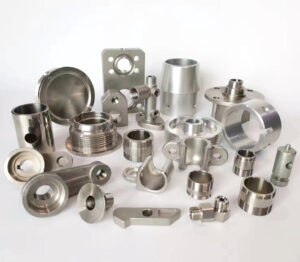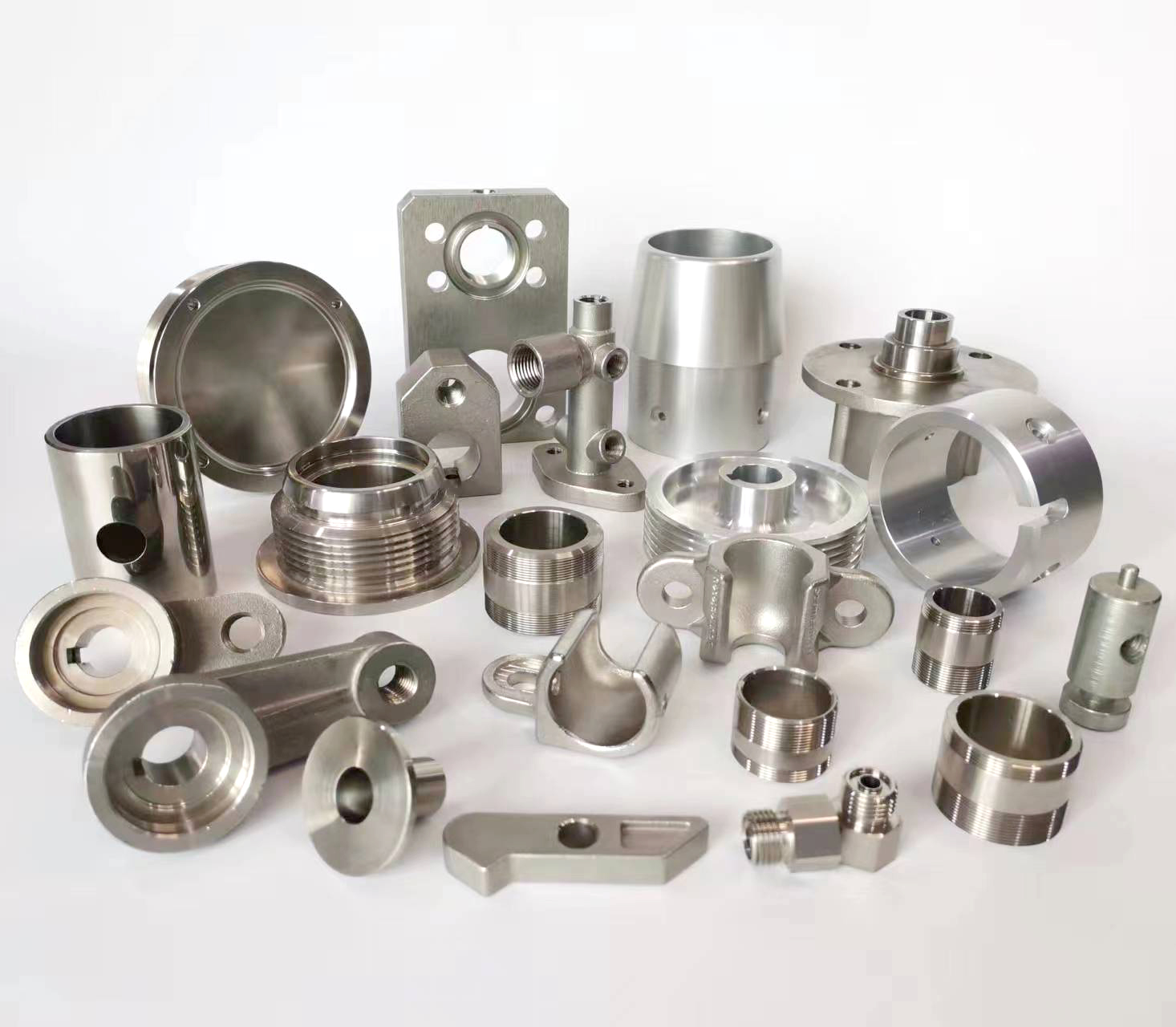
Determining the chemical composition of a metal is fundamental in materials science, manufacturing, quality control, and failure analysis. The methods range from simple, non-destructive techniques for quick sorting to highly sophisticated laboratory instruments for precise quantitative analysis. They can be broadly categorized into Non-Destructive Testing (NDT) and Destructive Testing.
- Non-Destructive Testing (NDT) Methods
These methods analyze the material without damaging or altering the sample, making them ideal for inspecting finished products, in-situ components, and valuable items.
a) X-Ray Fluorescence (XRF) Spectroscopy
Principle: A primary X-ray beam bombards the sample, ejecting inner-shell electrons from the atoms. As outer-shell electrons fall to fill these vacancies, they emit secondary (fluorescent) X-rays with energies characteristic of each element. The detector measures these energies to identify the elements and their intensities to determine concentration.
Types:
Handheld XRF (HHXRF): Extremely portable and popular for rapid, on-site alloy identification and sorting. It provides instant results.
Benchtop XRF: More powerful, used in laboratory settings for higher precision and the analysis of lighter elements.
Applications: Scrap metal sorting, quality control of incoming raw materials, positive material identification (PMI) in pipelines and pressure vessels, analysis of precious metals.
Advantages: Fast, non-destructive, portable options available, minimal to no sample preparation.
Limitations: Generally analyzes only the surface layer (a few micrometers deep). Less sensitive to light elements (like Carbon, Lithium, Beryllium). Provides semi-quantitative to quantitative results.
b) Optical Emission Spectrometry (OES)
Principle: An electrical source (spark or arc) is applied to the metal surface, vaporizing and exciting the atoms. As the excited atoms return to their ground state, they emit light at specific wavelengths. A spectrometer separates this light, and the intensity of each wavelength is measured to determine elemental concentration.
Applications: Precise analysis of metallic elements in ferrous and non-ferrous metals, especially for grade identification and accurate quantification of critical elements like Carbon, Phosphorus, and Sulfur.
Advantages: Highly accurate and precise for metallic and some non-metallic elements. Excellent for quantifying low concentrations. Considered a primary method for metal analysis in foundries and mills.
Limitations: Leaves a small burn mark on the surface (micro-destructive). Requires a flat, clean surface and good contact with the electrode. Typically a benchtop instrument, not as portable as XRF.
c) Laser-Induced Breakdown Spectroscopy (LIBS)
Principle: A highly focused, pulsed laser is directed at the sample, creating a micro-plasma that ablates and excites the material. The light from this plasma is collected and analyzed by a spectrometer, similar to OES.
Applications: Similar to OES and XRF for alloy sorting and identification. Particularly useful for analyzing light elements (like Lithium, Beryllium) that are difficult for XRF. Also used in remote and hazardous environments.
Advantages: Can be very portable (handheld units available). Minimal surface damage (smaller than OES). Capable of light element analysis. Very fast analysis.
Limitations: Slightly less precise than OES for some elements. Can be influenced by the surface condition and the environment.
- Destructive Testing Methods
These methods require the sample to be altered, sectioned, or destroyed. They offer the highest levels of accuracy and sensitivity.
a) Inductively Coupled Plasma Optical Emission Spectrometry (ICP-OES) / Mass Spectrometry (ICP-MS)
Principle: A solid sample is first dissolved in acid to create a liquid solution. This solution is nebulized into a high-temperature argon plasma (~10,000 K), which atomizes and ionizes the elements. The excited ions emit light (ICP-OES), or the ions themselves are detected by a mass spectrometer (ICP-MS).
Applications:
ICP-OES: High-precision quantitative analysis of a wide range of elements simultaneously. Excellent for determining trace and minor elements.
ICP-MS: Ultra-trace level analysis (parts-per-trillion range). The most sensitive technique for most elements.
Advantages: Extremely high sensitivity and accuracy. Can analyze almost all elements in the periodic table. Large dynamic range.
Limitations: Destructive (sample must be dissolved). Time-consuming sample preparation. Requires skilled operators and a controlled lab environment.
b) Spark-Discharge Optical Emission Spectrometry (SD-OES)
This is the traditional, stationary form of OES mentioned above. It is considered destructive due to the visible spark mark it leaves on the sample.
c) Combustion / Inert Gas Fusion Analysis
Principle: These are dedicated techniques for measuring specific gases in metals.
Combustion Analysis: The sample is heated in a pure oxygen environment. Elements like Carbon and Sulfur are converted into CO₂ and SO₂, respectively, which are then measured by infrared detectors.
Inert Gas Fusion (IGF): The sample is melted in a graphite crucible under a flow of inert gas. Gases like Oxygen, Nitrogen, and Hydrogen are released and measured using thermal conductivity or infrared detectors.
Applications: Precisely determining the concentration of Carbon, Sulfur, Oxygen, Nitrogen, and Hydrogen in metals, which is critical for steelmaking and assessing material properties.
Advantages: Highly accurate and specific for these particular elements.
Limitations: Purely destructive. Only measures the specific gases it is designed for.
d) Wet Chemical / Titration Methods
Principle: Classical analytical chemistry techniques where the sample is dissolved, and a specific element is measured through a chemical reaction, such as titration, gravimetric analysis, or colorimetry.
Applications: Used as a reference method or for specific applications where instrumental methods are not suitable. Often used to validate other techniques.
Advantages: Can be very accurate and is a well-understood fundamental technique.
Limitations: Very slow, labor-intensive, requires highly skilled chemists, and consumes chemicals.
- Microstructural and Surface Analysis Techniques
These methods provide information not just on composition, but on distribution and chemical state, often at a microscopic level.
a) Energy-Dispersive X-ray Spectroscopy (EDS/EDX)
Principle: EDS is an accessory attached to a Scanning Electron Microscope (SEM). The SEM’s electron beam hits the sample, generating characteristic X-rays that are detected by the EDS detector. It provides elemental composition from a very small spot or area.
Applications: Identifying inclusions, phases, and contaminants. Creating elemental maps to show the distribution of elements across a surface.
Advantages: Provides spatial and compositional information simultaneously. Excellent for failure analysis.
Limitations: Semi-quantitative without standards. Less accurate for light elements. Requires a vacuum and a solid sample.
b) Wavelength-Dispersive X-ray Spectroscopy (WDS/WDX)
Principle: Similar to EDS but used in an Electron Probe Microanalyzer (EPMA). It uses diffraction crystals to separate X-ray wavelengths, providing much higher spectral resolution.
Applications: Highly precise quantitative analysis of specific elements at the micro-scale. Detecting trace elements that EDS might miss or confuse due to peak overlaps.
Advantages: Superior resolution and accuracy compared to EDS.
Limitations: Much slower than EDS and more expensive.





